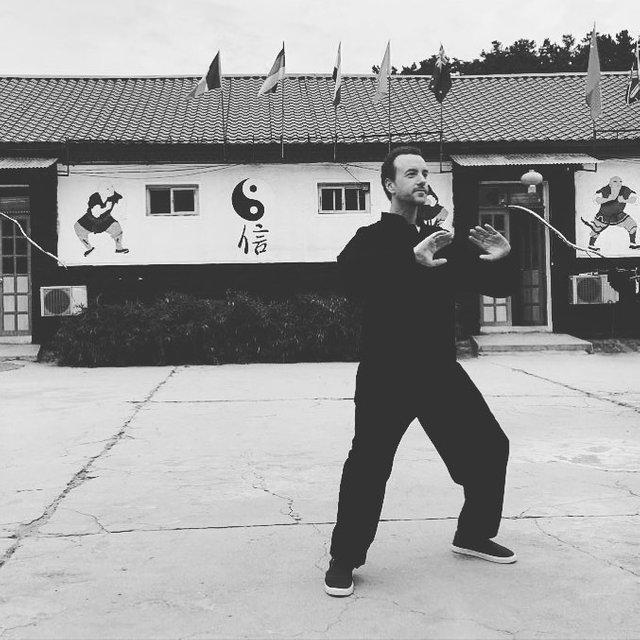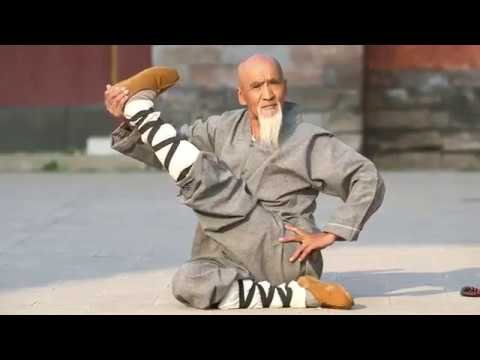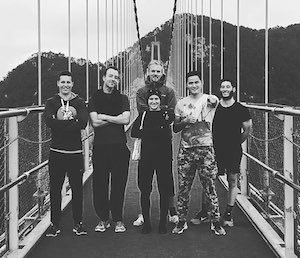5 Lessons From My Kung Fu Training in China
As my final days of training in the Tienmeng Kung Fu academy, in the hills of Shandong, China, came to a close in September 2017, I began reflecting on some key lessons that I’ve picked up from my short, yet intense, time there.

And this is what I’ve come up with…
1. If you don’t have strength, use speed
The good news is it is possible to defend yourself against a 6 foot 5 inch monster built like a tank. How? The key is speed. A quick jab or flurry of jabs to the neck or balls, and it’s game over, monster man.
This teaching comes from the Wing Chun school of Kung Fu, which emphasises speed and efficiency over strength, especially in close combat situations. The story of the origins of Wing Chun is somewhat fairytale and epic.
It is said that a group of martial arts masters gathered to work out a super-efficient and effective martial arts style that could be taught quickly to the monks of the temple, because they were increasingly under threat from foreign invaders, local warlords, and bandits. After the local warlord heard of the meeting and new potential threat, he sent in his troops and wiped out all masters, except a female nun, who escaped.
She took shelter in a nearby cave, where she continued to work on and develop this new style. After some time, a local village girl discovered this nun and, realizing her background as a martial arts master, sought her help in defeating a terrible man forcing her to marry him. The nun went to the man with a challenge; if this girl with whom he wanted to marry could defeat him in a hand to hand fight, she would not have to marry him. Laughing at the challenge, he accepted.
The nun then trained the girl in effective techniques, and when the time came for the duel, the girl had the man flat on his back in just a few seconds. This girl became the first student in the lineage of Wing Chun Kung Fu, which then got handed down from generation to generation, eventually reaching Bruce Lee many centuries later.
A well-trained wing chun martial artist can unleash around 8 punches per second! Wow!
2. Stretch every day
If you want more flexibility, it requires stretching every single day. Unfortunately, there is no shortcut to this.
In a conversation with another student, who is a trained physiotherapist, it was revealed that it’s not the muscle that is tight; it’s the neuro-muscular receptors at the muscle that is registering “stress” and therefore telling the muscle to lock up for protection.
Therefore, the stretching is a way of teaching and re-programming the nervous system that it is “safe” and the muscle can be released.

3. Repetition, repetition, repetition
Whenever you learn a new movement, whatever it may be, there is an engaged mental “learning” process involved, which takes a lot of your attention. Then, after repeating the movement again and again, eventually it will get embedded into your system, and then the mind that was previously occupied with the learning process will be freed up and be able to focus on other things.
If you want to get good at anything, repeat, repeat, repeat until it becomes a no-brainer.
4. All kinaesthetic training helps
This refers to the observation that all movement-based training contributes to other movement-based Kung fu in China trainings. When I was 20, I practiced Capoeira for 4 years, yet I haven’t practiced it for 10 years. However, for some Kung Fu kicks, the capoeira training re-emerged without effort and gave my kicks a lot of unexpected power. It is the same with the yoga; some of the yoga training came up in my Qi Gong and so on.
Therefore, all physical, kinaesthetic training overlaps and will benefit all other forms of training. Therefore, training is never wasted, so keep building up your physical movement dynamics – It all helps.
5. A relaxed body helps qi, speed, power, memory, and learning
When you learn new things, if you can relax your body and mind, it’s much easier to pick things up. It also helps your Qi move more easily throughout your body, offering better blood circulation and overall body relaxation. In Kung Fu, you go from hard “active” movements, followed by soft relaxed movements. When both are present, the practice becomes powerful, yet relaxed. Explosive, yet controlled.
In this way, your practice becomes dynamic, yet nurturing. Moving from intensity to relaxation and back again repeatedly is one of the keys to good health and vitality.

I am seeing how this training is already carrying over and expressing itself into my yoga practice. There is a feeling that my yoga will naturally take on a more martial arts dynamic which I think is exciting and is something that my students will likely see in the coming months!
So, if you are looking for a good “kick up the butt” to gain more flexibility, discipline, and feel more capable of defending yourself if any self-defense situation arose, then consider studying Kung Fu in China.
It’ll rock your world!
If you have any questions or comments, please post them below! :)
If you enjoyed this post, I would greatly appreciate your UPVOTE, and would love for you to follow me here on Steemit @yinyangmichael
If you want to learn more, visit my website -> http://www.michaelhetherington.com.au
I appreciate all your support.

Michael Hetherington
BHlthSci, Chinese medicine & yoga
Author & Teacher
.jpg)
I am also a proud member of @tribesteemup, a community of people working together to help make the world a more peaceful, positive, free place. Among us are visionaries, healers, free-thinkers, teachers, and high-vibe people who are creating great content to help make the world more positive and better for us all. Please stop by the page to check out the group and support the work being created.
Also, a special shout out and thanks to @c-squared for the amazing community vibes and support they are offering on the steem blockchain.
.jpg)
@ecotrain #ecotrain

Supporting People Who Help
Make The World A Better Place
#energy #energymedicine #taichi #meditation #kungfu #meditation #acupuncture #yoga #lifeforce #wellbeing #life
great article, when I was a kid I was practicing non-fighting kung-fu or ushu for 3 years and then I practiced for 2 years sanda (fighting style it's like kick-boxing)
To listen to the audio version of this article click on the play image.

Brought to you by @tts. If you find it useful please consider upvoting this reply.